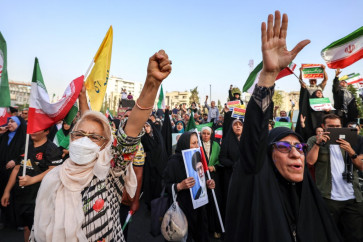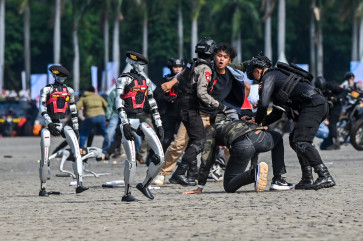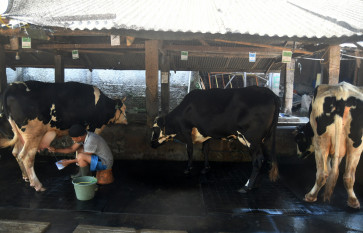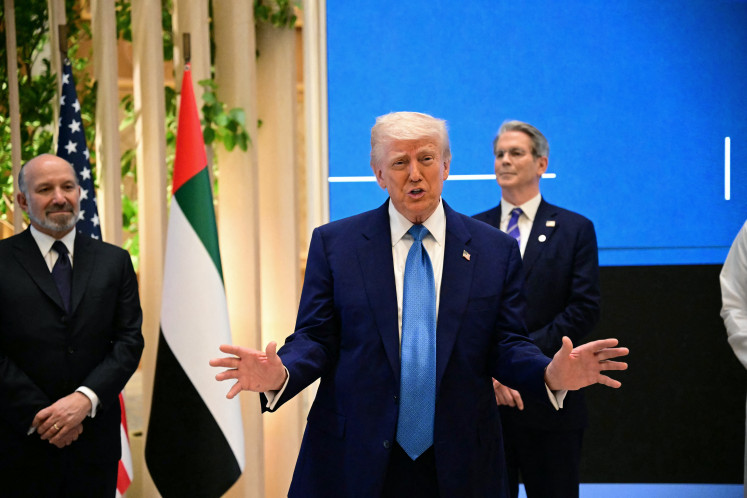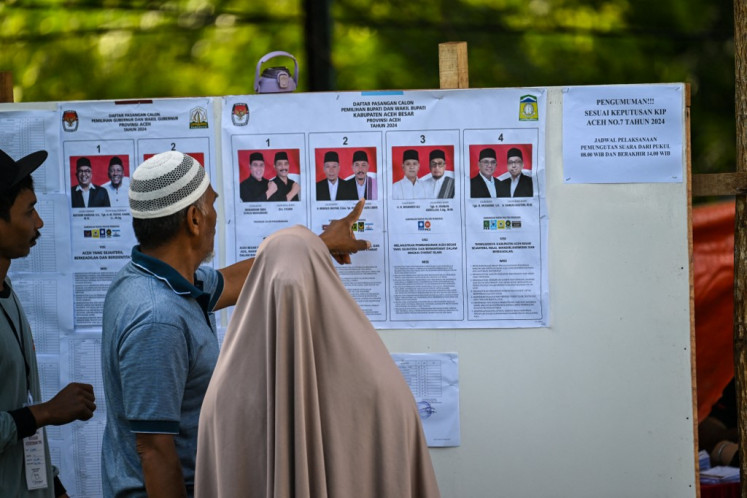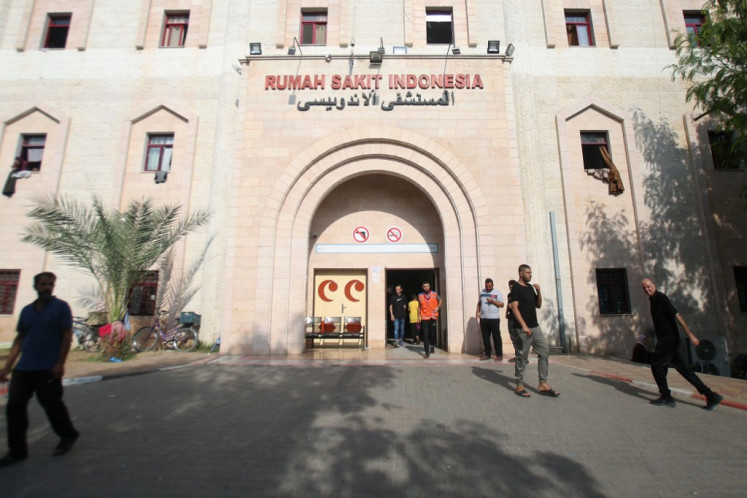Popular Reads
Top Results
Can't find what you're looking for?
View all search resultsPopular Reads
Top Results
Can't find what you're looking for?
View all search resultsEdhi Sunarso: A lesson in modern Indonesian sculpture
Edhi Sunarso’s artworks are inseparable from the development of modern sculpture in Indonesia
Change text size
Gift Premium Articles
to Anyone
Edhi Sunarso’s artworks are inseparable from the development of modern sculpture in Indonesia. Many even believe that one can learn about the development of the country’s modern sculpture simply by viewing his artworks chronologically.
Well known mostly for his gigantic, patriotic statues installed in numerous public places across the country, Edhi is believed to have pioneered the trend of monumental artworks, many of which are considered an important part of Indonesia’s history.
“He was one of president Sukarno’s most trusted artists and played a significant role in building confidence in Indonesia during its early independence,” said Anusapati, a curator and lecturer at the Indonesian Institute of the Arts (ISI) at Yogyakarta’s Fine Arts School.
Among his monumental masterpieces include the giant Selamat Datang (Welcome) and Pembebasan Irian Barat (Liberation of West Irian Jaya) statues, the Pancasila Sakti (Sacred Pancasila) monument in Jakarta, the Tugu Muda monument in Semarang (Central Java), the Pahlawan Tak Dikenal (Unknown Hero) monument in Digul (Papua), the General Sudirman monument in Bogor (West Java) and the Puputan-Badung War monument in Denpasar (Bali).
“His works have become models for many other monumental sculptures in Indonesia. He is the one who first created expressive and dynamic hero-like statues,” Anusapati said.
He added that before Western modern sculpture and the works of its noted figures became well known in Indonesia, Edhi Sunarso was experimenting with similar forms in his own individual way.
Speaking to The Jakarta Post on the sidelines of his recent solo exhibition in Yogyakarta, 78-year-old Edhi mentioned two figures that had influenced him the most during his career.
The first was noted artist Hendra Gunawan, who taught him several new techniques, and the second was his philosophy lecturer Dan Suwarijono, who taught him how to put “soul” into his works.
Edhi said he had a simple way of judging the successful creation of an artwork.
“If people are drawn to an artwork to have a closer look, rather than just quickly passing it by, then it is considered a success,” said the Salatiga-born sculptor, who has worked on numerous dioramas of Indonesian history for several museums across the country.
In terms of individual artworks, Edhi’s sculptures have influenced modern sculpture in Indonesia, especially during the period of its early development in the 1950s.
Although little is publicly known about his individual artworks, some of which were recently exhibited in his solo exhibition “Retrospeksi” (Retrospection) at the Jogja Gallery, they are believed to have inspired many aspiring sculptors.
His influence grew stronger in the 1960s after he was assigned to help establish the sculpture department at the Indonesian Fine Arts Academy (ASRI), now ISI Yogyakarta, where he has been a lecturer since 1957.
Edhi was initially accepted only as a guest student at the ASRI in 1949 at the age of 17, after being released from a Dutch colonial prison in 1946 where he had been jailed for joining Indonesian troops fighting against colonial rule.
He was accepted even though he had never graduated from either elementary or high school because he had been a soldier. Despite his lack of qualifications, he was accepted and graduated from the ASRI in 1955.
Many important names in the development of sculpture in the country were once his students, including Amrus Natalsya, Arbi Samah, Mon Mujiman, J. Sumartono, Untung Murdiyanto, Pamungkas Garjito and Hajar Satoto.
Starting with realist sculpture in 1952, Edhi began to include abstract figures in his works after he returned from two years of study at India’s Visva Bharati University in 1957. The realist trend was widely adopted by younger sculptors in the 1960s and 70s, just before Edhi’s works became almost entirely abstract.
In terms of visual style, curator Mikke Susanto notes that all Edhi’s monumental works are realistic and romantic, meaning they are created as they are without any illusion, deformation or abstraction, mostly because they are made to inspire a feeling of nationalism.
In term of Edhi’s individual works, on the other hand, Mikke notes there are at least three dominant styles: realism (mainly of suffering), figurative non-realism (mostly to simplify the form of nature) and symbolic figurative (mainly on life themes).
Among Edhi’s first works of realism are Kelaparan (Starving, 1952) and The Unknown Political Prisoner (1953). The latter won him second place at an international sculpture competition in the UK and is currently held at the Tate Museum in London.
Among his more recent abstract works are Keseimbangan (Balance, 2000), Kemenangan (Victory, 2003), Sesat (Deviant, 2008) and Potret Wajah Terakhir Putra Fajar (Portrayal of the Last Face of the Son of Dawn, 2010).
The last was recently presented to the ISI Yogyakarta as a token of appreciation, during his inauguration as an Empu Ageng Seni (Grand Master of the Arts).
“He deserves to receive the honor as one of the pioneers of modern sculpture in Indonesia and as senior lecturer at the School of Fine Arts, ISI Yogyakarta,” Soeprapto said after the inauguration earlier this month.
“I am very honored and my work has really been inspired by others, especially by the ideas of Bung Karno. I was just translating them into works of arts,” said Edhi after receiving the accolade.
— Photo courtesy of Jogja Gallery


